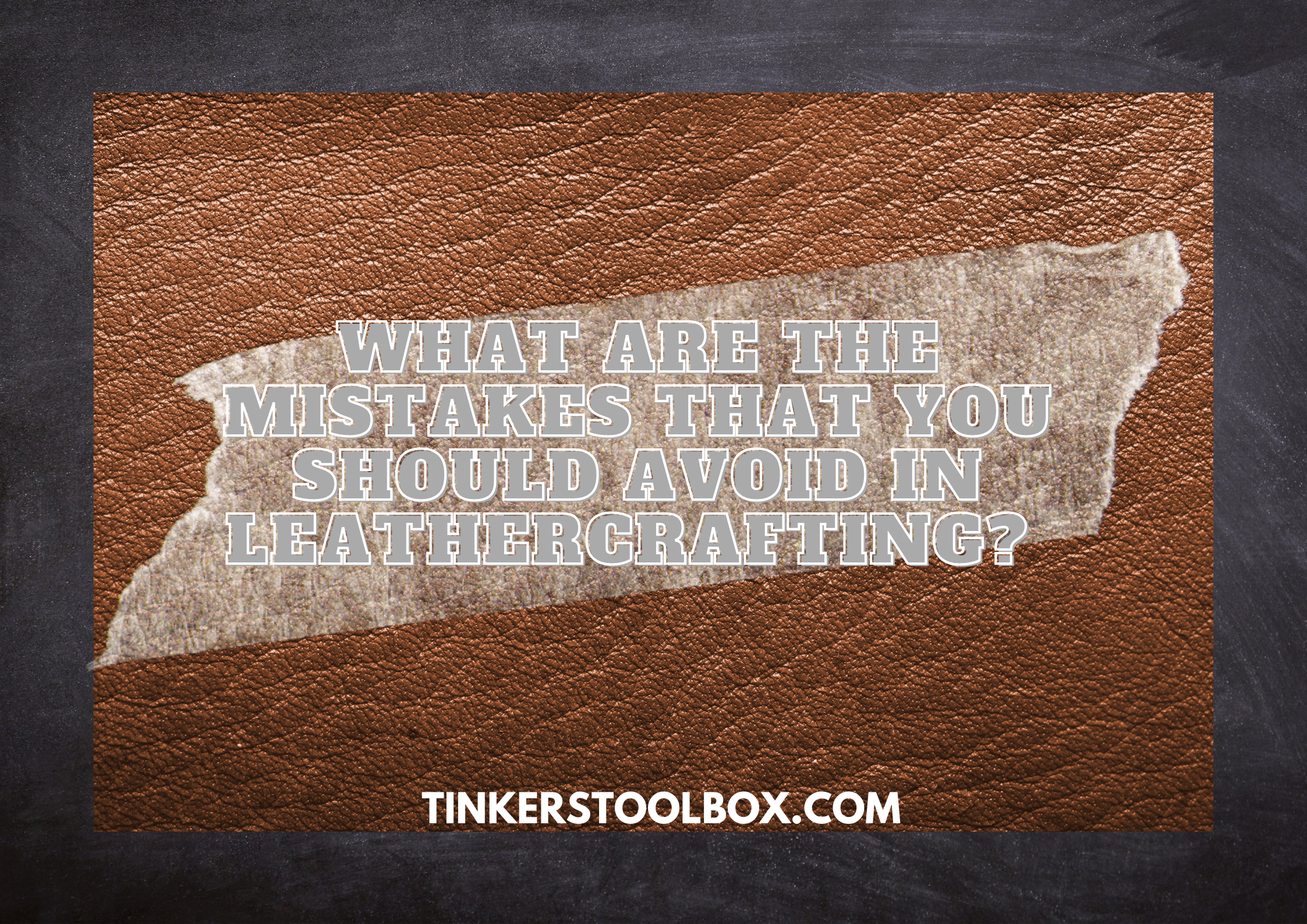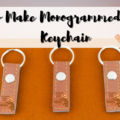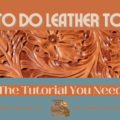Many beginners in leatherworking get too excited about doing their first project without even knowing the things they should avoid. Sometimes they will go to a store or order online to get the tool they think they need. There are also some things that they put aside, not knowing that it is essential in leather crafting.
Suppose you are beginning in leather crafting; lucky you because this article will discuss what you should avoid in leathercrafting. By knowing what those are, you will be safe from making the same mistakes that beginners then wished to know earlier.
1.Setting The Pattern Making Aside
The first mistake on our list that beginners in leatherworking usually do not pay much attention to is the pattern making. When we think of our future crafts, we get so excited that we sometimes go directly to make the craft using only the images in our minds.
When you set aside the idea of making a pattern, your project might come out nonuniform, which might cause you to take much time or get caught up in doing just one project. In some cases, because there is no concrete plan or outline, the tendency is a leatherworker might have to start from scratch again after finding out that the finished product has imperfections that might not be appealing to customers.
So if you are a beginner in leatherworking, do not rush things and picture what and how you want your product to look like. After that, start drawing your pattern and let them be your guide for the project’s size, designs, etc., so you can make beautiful leather projects faster and so you would know what to do next.
2. Not Measuring Over And Over Over Again
Another mistake to avoid in leatherworking is being too confident of the measurements, even if you only did it once. Accounts from Reddit admit that it is one of the most expensive mistakes they ever made when starting in leatherworking.
It may sound a bit shallow for some. Still, I am telling you, measuring your pieces twice won’t be enough, for it may lead to having either small pieces or bigger ones that just might not fit into the other leather cuts. And those leathers will end up being a scrap.
The measuring part must be done before cutting out all the pieces into their respective sizes. After making an outline and getting their measurements, you can now cut them carefully. Make sure to measure over and over again, so you know you get all the numbers right.
3. Using Dull Tools
In leatherworking, we use different cutting tools, pricking tools, awls, and many more that need to be sharpened before using it. Aside from it being frustrating to use a dull tool, it can be very dangerous too! But let’s talk about that for last.
If you use an unsharpened tool when doing a project, the chance is you will not get the clean-cut you want, and that is just another way to waste leather. It can also take more of your time running your tool on the same line because you couldn’t cut it through.
Another of our dull tool episodes is about the danger it can bring once you get wounded by it. A person can get a Tetanus infection when a bacteria called Clostridium tetani enters the open wound. Yes, it will hurt you, cause cuts, and the worst-case scenario is you can get Tetanus from it. And it can be life-threatening if not treated immediately and properly.
So how will you avoid wasting time and getting injuries as you cut your leather? To avoid putting too much time on the cutting part alone, make sure that your tools are sharp enough before using them. And to keep it sharp for a long time, it is essential to clean them with oils and make sure that there are no leather residues left. You can also try soaking the edge of your tool in a cup of vinegar and leave it there for 24hours then see the results for yourself.
In addition, a good leatherworking board can also help you avoid having dull tools. It can protect the pointy ends of your tools from going through the underneath surface, resulting in blunt ends. Poundo or Novolene boards are a good deal in leatherworking boards, so don’t forget to use one!
To avoid accidents while cutting the leather, always make sure that you have the right tool to use. Every tool has its role in leatherworking, and it cannot be substituted by another tool. Also, when working on a project, you should keep your tool angle perpendicular to the leather while cutting. By that, you can make a clean cut and an injury-free finger, and It can also help you lessen the time you will spend on the burnishing process.
4.Caging Yourself In One Idea
When you are a leatherworker, being creative is a must. You must have millions of ideas in your mind. Being creative and not depending on one design will make your leather product noticeable to your friends and future customers.
Leatherworking is a work for playful minds. You should not cage yourself with a single idea, for it will just make your product typical of what others have or did. And for sure, the saddest thing that would happen is that your customers or even you will find your projects boring.
As a leatherworker, we shouldn’t get used to the same beautiful outline inside our heads. We should open our minds to new designs and create a project that we can call our own. Like we have our signature embossed or engraved on it. We should be more willing to learn new tactics and listen to what the market tells us to do. All in all, all I can say is be your own artist!
5.Choosing/Purchasing The Right Tool
This is kind of the most common mistake that a leatherworker makes, especially the new ones. When they are just starting their leatherworking journey, they tend to think about going cheaper for the tools they will buy. The thought of “I’m just starting, why do I have to buy expensive tools?” always crosses their minds.
But the rule of thumb here is don’t go for cheaper tools even when you are new to leatherworking. It would be better to invest in the tools you will need as early as now so you won’t be buying any more tools in the long run.
If you still want to buy cheaper tools, for starters, remember that they might not last long, so you will just buy a new one after some time of using it. Second, they become dull after use, and third, you might just be wasting your money.
Aside from investing in your tools, be sure to check all the product reviews and be keen while reading them all especially when you are buying online, so you can get to know first-hand information from people who already purchased it. Don’t be impulsive when buying, and still do your research before getting any products you are not familiar with.
6.Being Impulsive
Speaking of being impulsive, this doesn’t just apply to buying your tools. This is also about you when you are working on your leather projects.Before diving into something or starting the project in your mind, you should always have forethought about everything. From the pattern, to the skills you need to learn up to the tools you will use.
The importance of having thought beforehand will help you determine the outcome that you want with your project, or you would already figure out the leather projects you are interested in.
When it comes to stitching, it would be better if you already know the skills in stitching before doing a project or leatherwork. Some leather workers prefer to apply the stitching skills they have learned in actual project making. But as they are moving on to the next process, they will later realize that they were doing everything in the wrong way.
When you are being too impulsive, you might just get frustrated and perplexed. It may also lead to you being confused about your own project and ending up doing or making revisions on it due to a lack of knowledge about a certain skill or leatherworking itself.
I have mentioned that impulsiveness isn’t just about leatherworking skills but also about the tools. Always remember that you should not buy the tools you don’t need. Because you might just end up hoarding different tools. Also, Like what ClaySticky said, “lower prices does not always mean it is the best deal.” What’s best would be to have enough knowledge about all the tools so you can understand their roles in leathercrafting.
In addition, know the best type of leather to use on a leather project beforehand. For example, if you want to make a bag, vegetable-tanned leather is one of the best options. Do not just buy leather because you want it or it’s cheap, instead buy it because it’s perfect and has the quality that will justify your project.
7.Not Taking Advantage Of The Boards
Sometimes the things that are right in front of you and are usually neglected, are the things that will help you save the day!
Some leather workers always set the idea of using working boards aside, especially when they do just light punches. But light punches actually don’t matter because there is still a possibility that your tools will get through the working surface. Remember to always use a working board when you are doing punches. Aside from it protecting your tools from getting dull, it also lessens the noise you make.
In leatherworking, there are a variety of boards that you can use when doing leathercraft. In our past article, we have talked about the two popular boards in leatherworking: the Poundo and Novolene boards. If you want to know more about these two, kindly check Poundo Board vs. Novolene Board: Working Surface In Leather Working for more ideas about what these boards can offer.
8. Cutting In The Wrong Way
Who thought that even the cutting part had to be done properly? Like the other common mistakes such as not repeatedly measuring, not knowing how to cut leather also has many cons.
The first one that you should keep in mind when cutting your hands and tools position. When you cut in the wrong position or angle, e.g., if your blade is too high, the tool you are using might slide down directly on your fingers or hands, resulting in deep cuts.
The tip I can give you when you are cutting your leather is to always put your hands down; that will help you get a sturdy surface. Don’t forget that you should keep the whole thing down (blades, knives, pricking tools, etc.) and put more weight onto it. While your one hand is holding the blade on the leather, put your other hand on the ruler, pressing it hard, so it won’t move as you run your cutting tool through the leather.
Although you do not use a cutting tool when cleaning the edges, let’s still consider this one since I believe you should know the right technique to clean the edges of your project.
We bevel the edges or corners of our project to be smooth so it won’t be sharp. Beveling creates round-shaped and perfectly shaved edges to avoid getting wounded by it so you should totally practice this one!
Cleaning or trimming the edges with just the minimal knowledge you know about bevels would somehow work, but don’t expect that they will be perfectly cleaned. Try practicing to bevel a scrap leather first before doing it on the actual project. This usually takes some time but don’t fret because I’m sure you’ll be able to master it soon.
Don’t forget that when you are doing this step, you should always place your thumb and index at the back of your bevel because scratching edges can make it really sharp and sure, you don’t want to cut yourself with your sharp-edged craft.
9. Not Knowing How To Dye Properly
I know everybody gets too excited to finish their crafts, and the last thing you will need to do before jumping out of success is to dye the project. A certain amount of time is required when dyeing because not allowing the coats of dye to dry completely can lead to an uneven finish. And this is exactly why we should tackle this mistake.
I’ve observed that even a person working on leatherworking for a long time still soaks their dauber or sponge too much. Because they believe it will get all the dye and so they can just apply it twice or even once.
Soaking your sponge or dauber too much can release excessive dye that creates a heavily dyed spot or overly colored area, making it hard for everyone to unsee. Aside from that, also avoid dropping even just a small amount of dye on the leather project or craft, for it can make a nonuniform spot.
One last tip I can give you is not to dip the sponge directly on the dye bottle because it can ruin the whole dye. Instead, get another container or bowl where you can put your dye and dip your sponge or dauber there.
Be Confident With Your Craft!
In a nutshell, of course it is normal to make mistakes in everything that you do. But keep in mind that you can still do some things to avoid making mistakes over and over again. I hope with the help of this article, you can now make leather crafts flawlessly!Go start doing plenty of perfect crafts now and don’t forget the pointers you have learned from this.















